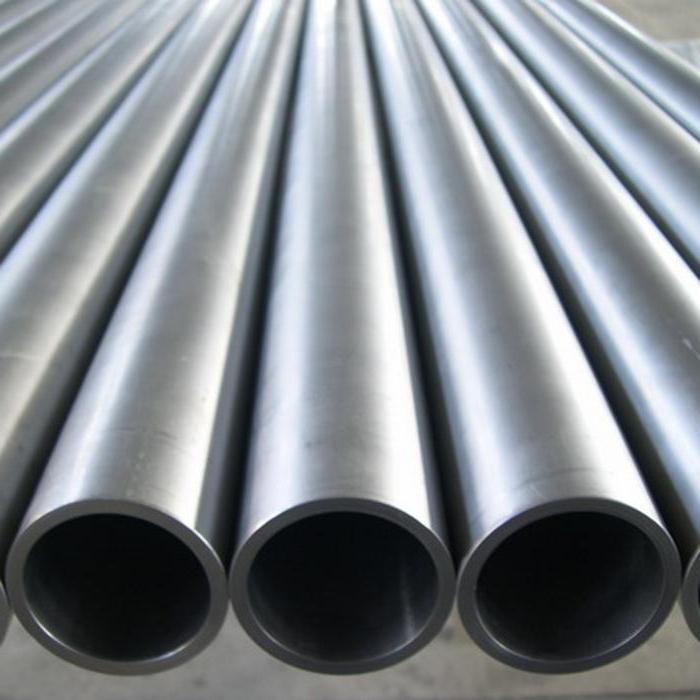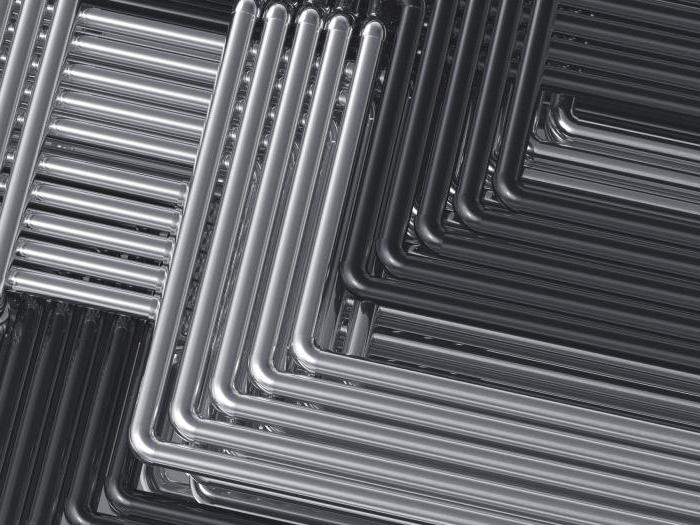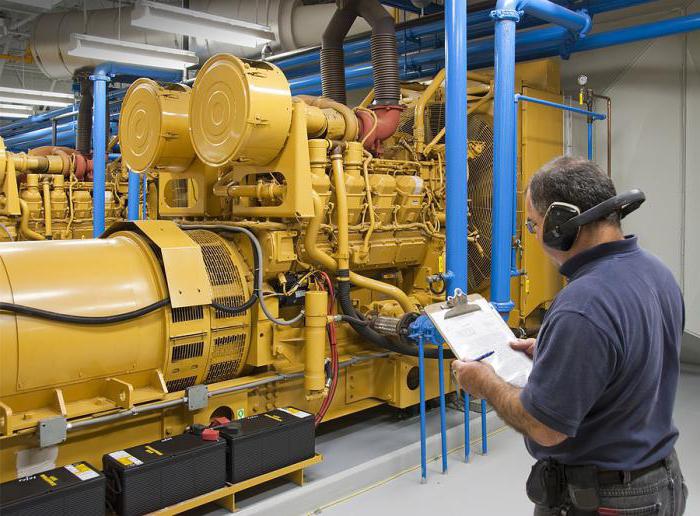In our time, it is simply impossible to imagine human activities without using the products of the metallurgical industry. Various metals and alloys literally flooded our lives. Carbon steel, which has found its active application in almost all industries and fields, is no exception. National economy. Its properties, purpose and composition will be discussed in this article.
Definition
So, first of all, we indicate that carbon steel is an alloy of iron and carbon. Moreover, the content of the last element should be no more than 2.14%. Separately, it is worth considering the classification. Such steel can be divided by:
- structure;
- production method;
- degree of deoxidation;
- quality;
- destination.
All this will be discussed below.
Alloy structure
Carbon steel happens:
- hypereutectoid (carbon content is less than 0.8%);
- eutectoid (carbon has a concentration of 0.8%);
- hypereutectoid (carbon more than 0.8%).
This gradation allows you to determine the properties of carbon steel.
Production methods
Absolutely any steel is initially based on cast iron, which is subsequently processed using a special technology. Carbon steel can be created by three main methods:
- converter smelting;
- open-hearth melting;
- electrothermal treatment.
The production of steel in the converter occurs by blowing molten iron with oxygen under pressure. The converter itself is a pear-shaped oven lined from the inside with a special refractory brick. Depending on which masonry (dinas SiO2 or the dolomite mass of CaO and MgO) is inside the converter, this method is being divided into Bessemer and Thomas.
The preparation of steel in an open-hearth furnace is reduced to burning carbon from cast iron with oxygen, which is not only in the air, but also in iron oxides, which enter the furnace in the form of scrap metal and iron ore.
The open-hearth method, unlike the converter method, involves controlling the chemical composition of the finished product at the outlet by introducing metal components in the required proportion. Unfortunately, despite its advantages, the open-hearth method of producing steel is no longer relevant today due to its technological backwardness and too many harmful emissions into the environment.
In electrothermal furnaces, the highest quality steel is produced. This is possible due to the fact that almost no air enters the furnace from the outside. Due to this, harmful iron monoxide is almost not formed, namely, it reduces the properties of steel and pollutes it. In addition, the temperature in the furnace does not fall below 1650 ° C, which, in turn, allows you to remove unwanted impurities in the form of phosphorus and sulfur.
The charge for such furnaces can be different: cast iron can predominate in quantity, but sometimes metal scrap makes up most of it. It is also possible to alloy steel with very refractory materials - tungsten and molybdenum. Perhaps the only significant drawback of this method of steel production is its energy intensity, since up to 800 kW / h can be produced per ton of smelted mass.
Chemical components
The composition of carbon steel is worth considering in more detail. We point out carbon first. It is this element that has a direct effect on the strength and hardness of steel: the more it is, the higher the above characteristics, while ductility is reduced.

Manganese and silicon are not those components that have a significant effect on the properties of steel. In the smelting process, they are introduced for the purpose of cleavage.
Sulfur is considered an extremely harmful impurity. Because of it, steel becomes brittle during its pre-heating pressure treatment. Sulfur also reduces strength, resistance to wear and corrosion.
Phosphorus leads to cold brittleness - brittleness at low temperatures.
Ferrite introduces a soft and plastic microstructure into the steel. Its antipode is cementite - iron carbide that increases hardness.
Types of heat treatment
Carbon steels, the use of which is possible almost everywhere where a person carries out his life, are able to significantly change their mechanical properties. For this, heat treatment should be performed, the meaning of which is to change the structure of the steel during heating, aging and subsequent cooling based on a special regime.
There are such types of heat treatment:
- Annealing - reduces hardness and grinds grains, increases workability, toughness and ductility, reduces internal stresses, eliminates structural heterogeneities.
- Normalization - corrects the structure of superheated and cast steel, eliminates the secondary cementite network in hypereutectoid steel.
- Quenching - allows you to get the highest hardness and strength.
- Vacation
Differentiation as intended
Carbon steel is divided into two large groups:
- instrumental;
- structural (distinguish ordinary, high-quality and automatic varieties).
Ordinary steels are marked with the letters "St" and a number from 0 to 6. All steels with a brand number from 1 to 4 are produced boiling, semi-calm and calm. Numbers 5 and 6 can only be calm or semi-calm. In addition, these steels are divided into three large groups: A, B, C.

- Group A. The higher the number in the steel marking, the greater the strength.
- Group B. With increasing numbers, the carbon content increases.
- Group B. Mechanical properties correspond to group A, the chemical composition corresponds to group B of the same number.
The most common types of construction used are St1 and St2. It is these brands that are involved in the creation of reservoirs, pipelines, columns. St3 and St 4 are relevant for the construction of structures, and also reinforcement for reinforced concrete is made from them. GOST 380-2005 carbon steel is the basis for sheet, round, I-beam and channel steel.
High-quality steels are characterized by cheapness and quality. Label them as follows: from 08 to 85 with the prefix at the end of "PS" (semi-quiet), "SP" (calm), "KP" (boiling). The numbers indicate carbon concentration in hundredths of a percent.
Tool steels are used for the manufacture of three main groups of tools: cutting, measuring, stamped. The numbers in the label indicate the carbon content in tenths of a percent.
Chemical exposure
Carbon and alloy steels may be subject to special treatments.
One of them is cementation - a process that represents the diffusion saturation of the surface layer of steel with carbon when heated in an appropriate medium. The ultimate goal of the operation is to obtain high surface hardness and wear resistance with a viscous core. Cementation can also occur in a solid carburetor, which is a mixture of charcoal and carbon dioxide.
Steel nitriding is a process consisting in the diffusion saturation of the surface layer of steel with nitrogen. This procedure is carried out in an ammonia atmosphere at a temperature in the range of 500-700 degrees Celsius. Nitriding is carried out to obtain the surface of the part, which is resistant to wear and corrosion and has great hardness.
Borirovanie - the upper layer of steel is saturated with boron. This is done to increase wear resistance, heat resistance and hardness.
Also, to obtain heat-resistant surfaces, aliasing is used - the saturation of steel with aluminum.

Alloy carbon steel grades
This large group is divided into structural, tool and steel with special qualities. The first are used for the manufacture of gears, bushings, studs and parts operating in extremely difficult stressful conditions. In addition, this group includes spring-spring and ball-bearing steels.
Cutting and measuring tools are made from tool steels.
The special qualities of the described material are manifested in its scale and heat resistance. Stainless grades can also be included here.
Conclusion
As you already obviously understood from the foregoing, one of the most sought-after materials today is carbon steel (its purpose has a wide range). It is a relatively inexpensive basis for the creation of many machines, mechanisms, parts, structures, buildings, structures, and in general much of what surrounds us. The world leaders in steel production are now called China, Japan, Germany, the United States. It is these countries that set the tone in metallurgy on the planet.








